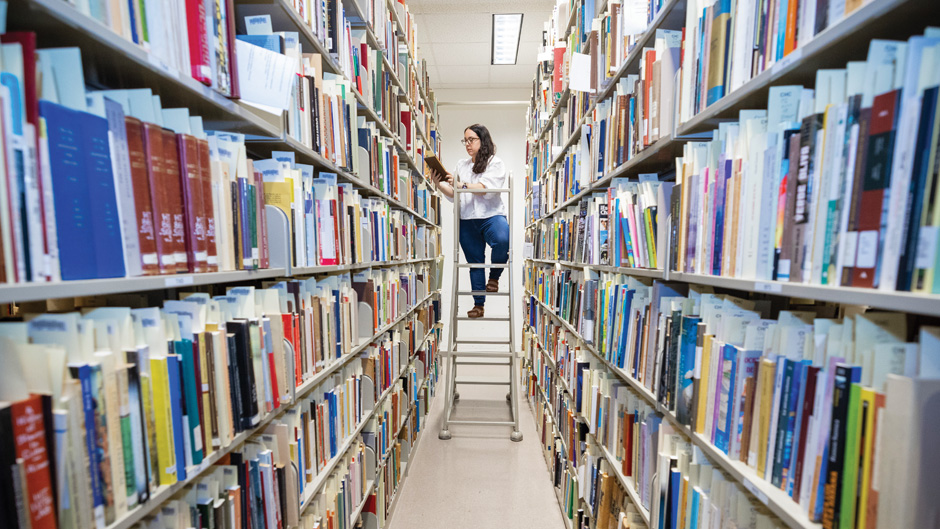The first library collections were formed by donations of private collections, individual books, and journals. The first gift was made by Mary Baird Bryan, wife of former U.S. Secretary of State William Jennings Bryan, several months before the University opened. During the first few decades, library services were provided in a variety of temporary quarters, and the library program was overseen by a number of administrators and clerical staff.
In 1932 the University appointed Dorothy Miller the first professional librarian to oversee the program; William G. Harkins succeeded her in 1940. The Libraries’ budget increased significantly in 1946, and the size of the staff and collections grew commensurately. Four of the temporary locations were consolidated in the Solomon G. Merrick Building in 1949, while separate library collections remained at the Anastasia Building and other sites in Coral Gables.
Faculty, administrators, and students had long been advocating for the building of a central library on the Coral Gables Campus. Planning began in earnest with the appointment of Archie McNeal as the director of libraries and professor of library science in 1952. McNeal emphasized the importance of constructing this facility, and the University’s 1957 fundraising campaign helped make it a reality.
In December 1959 ground was broken for the new central library. The architects were Watson, Deutschman, and Kruse, and the striking mid-century Otto G. Richter Library was completed in 1962 with the support of $2 million from its namesake’s $6 million bequest to the University.
In the same year that the Richter Library opened, the Albert Pick Music Library also opened, with Elsie Fardig appointed to serve as chief music librarian. A newly updated law library was planned to meet the accreditation requirements of the American Bar Association and opened as part of the new law school building in 1956. The marine library occupied various locations on the Coral Gables and Marine campuses beginning in 1943; in 1971 the Rosenstiel School Library opened in the Henry L. Doherty Marine Science Center. Ground was broken on the Medical Campus library in January 1971 to meet the medical school’s accreditation requirements, and the Louis Calder Memorial Library was dedicated in March 1972 under the leadership of Mildred Crowe Langner. Architects of this distinctive, mid-century library were Steward-Skinner Associates and R.M. Little.

In 1975 a new wing of the law library opened thanks to a $600,000 bequest of Baron de Hirsch Meyer, who financed the first four School of Law buildings. In 2005 the Marta and Austin Weeks Music Library and Technology Center opened thanks to the generous support of its namesake donors. Also in 2005, the Cuban Heritage Collection opened in the Roberto C. Goizueta Pavilion on the second floor of Richter Library thanks to the generous support of multiple donors, predominantly The Goizueta Foundation. The Cuban Heritage Collection is the largest archive on the history of Cuba outside of the island and the largest archive documenting the Cuban diaspora in the world. The Kislak Center at the University of Miami opened in 2019 and houses both University Archives and Special Collections. It is named in honor of Jay I. Kislak, whose transformative gift of his extensive collection on the Early Americas helped establish the center. The award-winning renovation was led by Alejandro Silva, B.Arch. ’99, of Silva Architects.

As the modes of knowledge transmission shifted to online and networked information in the 1990s—and scholarship reoriented toward the use of digital research applications and outputs—the focus turned to building a virtual library. Collection priorities shifted to the acquisition of online books, journals, and related media, and to digitizing the Libraries’ vast collections of unique material. The University Libraries Scholarship@Miami serves as the definitive record of University research and creative production.
University Libraries continue to evolve as they support research, teaching, learning, and clinical care. They consistently rank among the top 50 research libraries in North America according to annual data published by the Association of Research Libraries.
Read the full issue of Miami Magazine Centennial Edition online.

